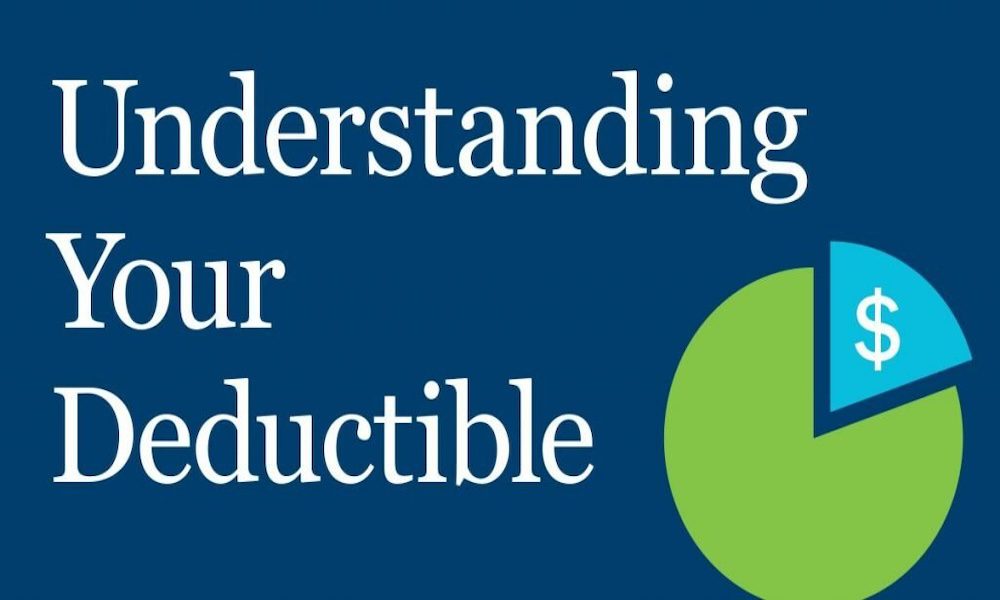
Our world is ever growing and changing. While many things cycle through, enter bell bottoms, mullets, chunky sweaters, over sized glasses and retro furniture, one constant since the 18th century is insurance. I’ll save you the history lesson of how insurance was formed, but I will state that we have all benefited from it at one time or another. Your home, auto, boat, jewelry, umbrella, motorcycle insurance, and so much more, provide peace of mind in the event that disaster strikes. You know that you have an agreement with the insurance company, a set of rules that you both uphold in the event of a loss. That agreement has a lot of moving parts and I want to specifically address your deductible.
What is a deductible? A deductible is a pre-determined monetary amount that you and the insurance company have agreed that you are responsible for paying towards your loss. In the event of a covered loss, your deductible is subtracted from what your insurance pays towards the claim.
Insurance is mainly for catastrophic loss that you would be unable to pay for yourself. Back in the day, it was acceptable and normal for extremely low deductibles (i.e. $50) and claims for minimal damage such as a broken screen door. Over the past few years, insurance companies have implemented a minimal deductible and have tightened the reigns on what constitutes as a catastrophic loss. Screen doors, small tree branches and the icemaker going out on your freezer from 1985 no longer count. Those types of instances are viewed more as maintenance for the homeowner. Maintenance, along with wear and tear, are excluded by your property and casualty insurance policies. When it comes to filing a claim, let’s think big picture such as:
- An auto accident including colliding with another person, place or object
- Windshield or glass claims
- Tornado/lightning
- Wind or hail, Fire, theft, or vandalism
(**Please note that flood and earthquake are not automatically included in the base homeowners policy. Talk with your agent about what additional options are best for you if you desire those coverages).
So what now? You and your agent or account manager should have a conversation about how much risk you want to absorb. Below are a few important facts about your deductible.
- The deductible is per occurrence. If you have multiple losses within a policy period, usually 6 or 12 months, you will be subjected to a deductible per loss.
- The purpose of a deductible to is ensure that policy holders have “skin in the game” to share the cost of any lost with the insurance company. Each party has a percentage of responsibility.
- Your deductible can help cushion the financial stress during a catastrophic loss for you, the client and the insurance company.
- A general rule is that the higher your deductible, the lower premium cost to you .
Let’s address #3 and #4 before we wrap up. The “financial stress” mentioned above looks different for every family. I want to encourage you to assess what that is for you personally. What works better for you now so the stress in the future may be lessened? Is it the current premium you have now so you opt for the lowest deductible possible which saves you having to pay more if a loss occurs? You may have a low deductible grandfathered in from the 90s/early 2000s which allows you a $500 deductible, however, your premium may reflect the low deductible. Or is the better option to have a higher deductible now, saving you more money on the premium, and in the event of a loss, you absorb more of the financial responsibility? There is no easy answer. Let’s look at a quick example:
Scenario 1: I have a $1000 deductible on my home and my annual premium is $2000 (lower deductible, higher premium) that I’ve paid over the past 10 years. My toddler knocks over a candle that was burning, catches the cream velvet drapes on fire, and within minutes the house is ablaze with my family safely outside. Our home is 50% destroyed. When working with my adjuster on scheduling the $100,000 worth of repairs of our home, I cut the general contractor a check for my deductible I’ve promise to pay of $1000.
Scenario 2: I have a $2000 deductible on my home and my annual premium is $1000 (higher deductible, lower premium) that I’ve paid over the past 10 years. My toddler knocks over a candle that was burning, catches the cream velvet drapes on fire, and within minutes the house is ablaze with my family safely outside. Our home is 50% destroyed. When working with my adjuster on scheduling the $100,000 worth of repairs of our home, I cut the general contractor a check for my deductible I’ve promise to pay of $2000.
STAY WITH ME. WE’RE ALMOST THERE! HOME STRETCH. The difference in premium I’m paying between scenario 1 and 2 over the 10 year span is $10,000. Premium is a given. But the deductible difference is $1,000 each year which I may not have to pay if I don’t have a loss. That’s $10,000 I kept if I pick the $2000 deductible. I can chose to put that away in my savings, in my emergency fund, or my deductible fund.
I’ve never seen premiums like this in my lifetime (yes I know I’m under 35 but still). If I hear the word inflation one more time……. Well you get it. BUT it’s our reality. Premiums are increasing in the insurance world and there’s no way to stop it. However, you can take some control over the renewal increases you have seen by taking a serious assessment at your insurance deductible. Call us! 574.258.5555 We understand the different stresses of life and want to help you navigate deductible options that fit your needs as best as we are able.



